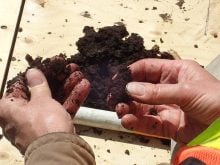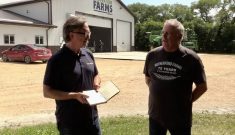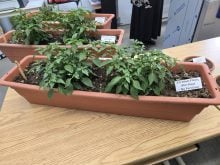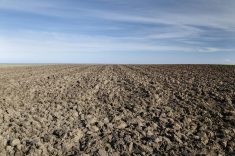Vertical tillage is a tricky term to grapple with. It’s less a method of tillage than it is a grouping of implements sold under that banner.
It is marketed as a means to deal with soil compaction but in reality the implements marketed under that umbrella do little to address that problem. Yet, in certain areas, it seems to be gaining popularity. One area where it is taking hold is the Red River Valley.

“It would not be inappropriate to call it a fad,” says David Lobb, professor of landscape ecology, with the department of soil science at the University of Manitoba.
Vertical tillage relies on heavy coulters (or blades) to cut crop residue and disrupt the soil. There are several types of these tools used in combination with a variety of other tools such as harrows and rolling baskets. These coulters are very good at cutting up troublesome crop residue. They are designed with waves, ripples or bubbles to transmit forces sideways. This helps to break up the soil without inverting it, loosening the topsoil and leaving much of the crop residue on the soil surface.
This sideways action is supposed to crack the soil downward below the depth of tillage and loosen the subsoil (this is where the term vertical tillage comes from), but Lobb cautions that the concept has been greatly oversold.
Read Also

Manitoba boosts stake in cereals centre to $23.5 million
Premier Wab Kinew said the additional project funds will help ‘Trump-proof’ the provincial economy.
He explains that farmers are being told that if they’re tilling six inches down, it’s going to cause shattering of the subsoil down another six inches.
“I’ve never seen any evidence of that ever happening,” Lobb said. “If people are being told that this is going to get rid of subsoil compaction, that’s false.”
In addition, there are some very serious concerns when it comes to environmental degradation.
“When I look at tillage and erosion I get quite concerned about the fact these vertical-till units are actually very disruptive,” says Lobb.
The biggest cause of soil erosion and degradation, is not wind or water erosion as might be expected, it is tillage erosion. Tillage erosion is the movement of soil during tillage.
“You always move more downslope than up, so you end up with eroded hilltops.”
While in the flat flood plains of the Red River Valley, this type of erosion is less of a problem, but Lobb says his concern would be if and when farmers outside of the valley start to think this is a good idea.
From Lobb’s perspective so-called vertical tillage is really hard to justify.
“If you’re asking if I’d ever recommend doing it to manage a subsoil compaction problem? No, I would not recommend it. If the intent is to break up the topsoil and manage the crop residue, there are other tillage options. This would fall under the category of not solving the problem and potentially causing more problems.”
Marla Riekman, land management specialist for Manitoba Agriculture, offered an additional perspective.

“I do think it’s important to be clear on whether or not the implement is truly ‘vertical tillage,’ compared to the high-speed discs that are sometimes sold under the vertical-tillage umbrella,” Riekman said. “A true vertical-tillage implement will throw very little soil and is really just used to chop and size crop residue.”
The problem is when implements that aren’t doing that are marketed under the vertical-tillage banner, she said.
“Many of the implements being sold right now are high-speed discs, which is the practice that I know David (Lobb) is very worried about,” Riekman said. “These high-speed discs throw the soil quite a distance and pulverize the soil leaving it vulnerable to wind erosion in dry conditions.”
However, Riekman notes that from a grower’s perspective, there are some positives.
“The top two inches or so have been worked up, large clods broken down, and residue has been chopped quite fine, while leaving a nice firm surface below the depth of tillage,” she said. “This is something that can be great for seeding; not only is the soil easy to seed into, but the firmness at that two-inch mark helps to carry equipment in wetter soil conditions.”
On the other hand, the firmness at two inches is sometimes due to compaction — especially in situations where the farmer uses that same implement on every acre every year.
“In these cases, it would be nice to see the rotation of different types of tillage implements to vary the depth and speed of tillage occasionally,” Riekman said.
While there might be some differing opinions as to the usefulness of vertical tillage, both Riekman and Lobb agree that if the goal is to break up soil at depth (which is what the name implies) and solve soil compaction issues, then it largely fails.
















